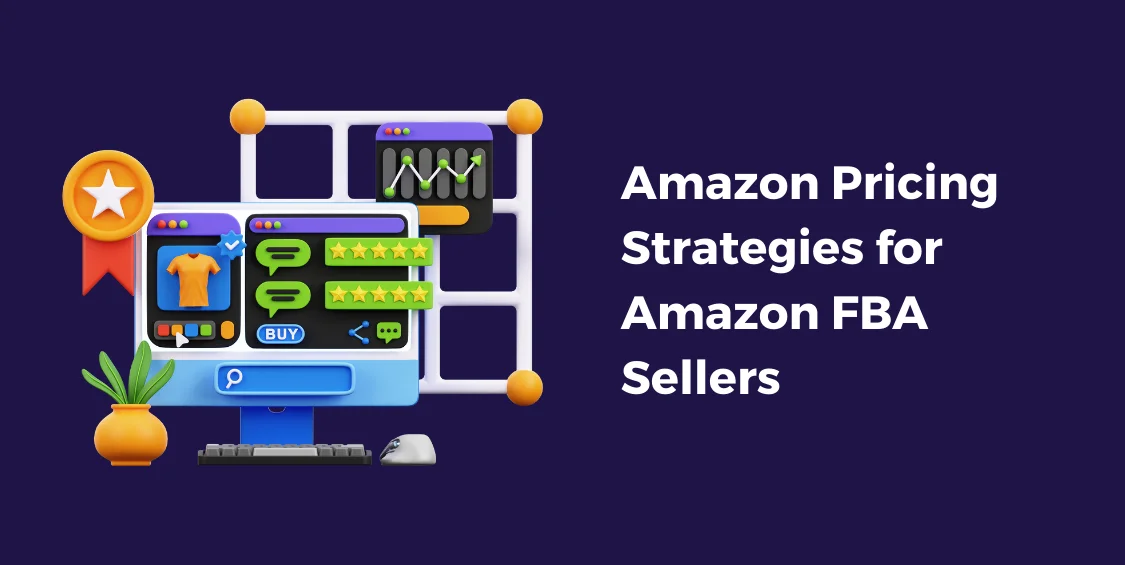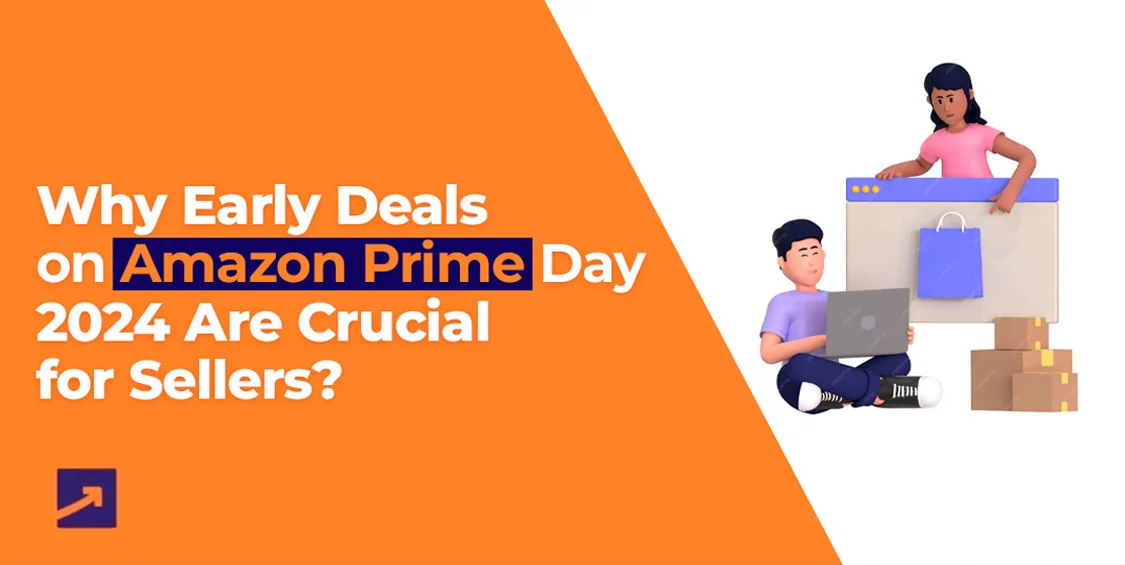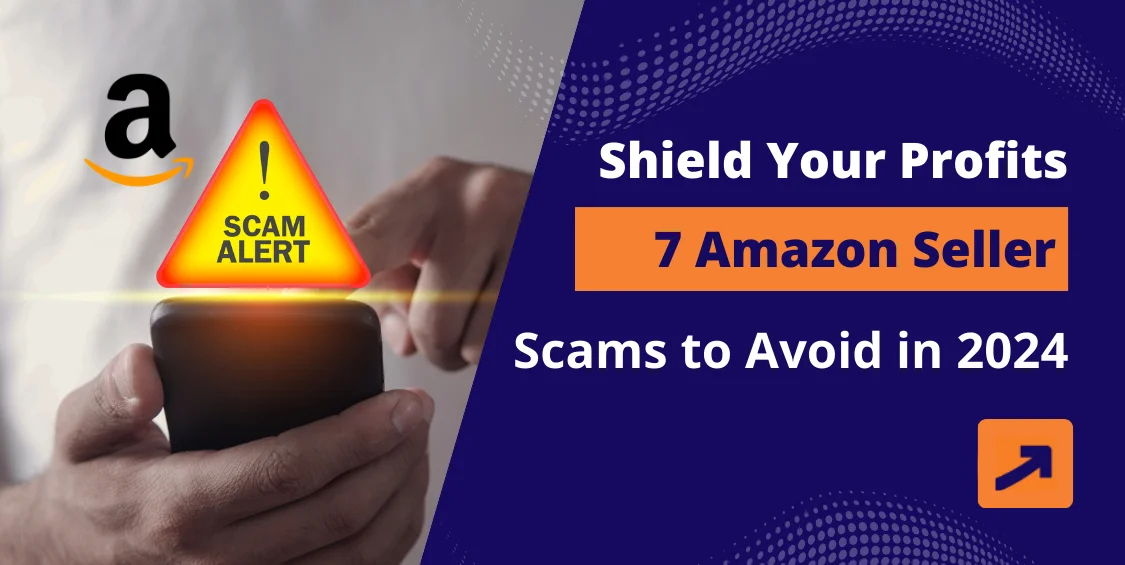While a price exceeding the product’s value may seem unreasonable to the customer, an understated price may induce second thoughts in a consumer. Finding that sweet spot between your profit and your customer’s interest can be complicated especially if you’re competing over the gigantic eCommerce marketplace, Amazon.
Staying updated on the latest pricing strategies in the dynamic eCommerce landscape is crucial. It’s impressive how the retail giant has established itself as a leader leveraging the most cunning pricing strategies, conveniently outperforming their competitors.
Nevertheless, your small business must implement an intelligent Amazon pricing strategy to stay competitive and profitable. Regularly adjusting your prices to align with market trends ensures that your products remain relevant.
This article will dive into the ever-changing world of Amazon’s pricing strategy. We will also analyze the various pricing strategies employed by Amazon and explore the intriguing price fluctuations on the platform.

Why Do I Need To Update My Pricing on Amazon?
Everyone enjoys scoring a bargain now and then. Your clientele is not an outlier. Customers nowadays are more savvy than ever before, taking the time to shop around, investigate numerous products, and compare costs before making a final decision.
Algorithms and apps for comparing pricing have increased openness and convenience for shoppers. However, inflation and disruptions in the supply chain lead to price increases for merchants.
A well-thought-out Amazon pricing strategy facilitates a company’s ability to select profitable prices by considering customer reactions, market forces, and stakeholder interests. However, there is no universal rule for setting a price for a good or service. Amazon sellers should try different pricing tactics to see what brings them the most sales.
Understanding Amazon’s Pricing Policies
Amazon Marketplace Fair Pricing Policy
While Amazon wholesale sellers are free to establish their prices, the site does have a set of rules known as the Amazon Marketplace Fair Pricing Policy that are meant to prohibit “pricing practices on a marketplace offer that harms customer trust.” All sellers on Amazon must abide by these policies and never do the following:
Putting a false reference price on a product to trick buyers into thinking it’s worth more than it is.
Imposing an unreasonably high shipping cost on a product
Grouped product sales at a premium over the cost of buying the items separately
Putting a price on something that’s well above what people are currently paying for it on or off of Amazon
Sellers who violate Amazon’s Fair Pricing Policy more than once are subject to having their listings and accounts suspended to prevent unfair business practices. Amazon doesn’t keep tabs on how much individual sellers mark up their goods, but the site does check to make sure their prices are fair and won’t make customers lose faith in the Amazon name.
Amazon MAP Pricing
Keeping your goods safe from unscrupulous vendors is crucial. With a MAP policy, you can dictate the lowest price authorized resellers of your products on Amazon wholesale are allowed to offer. While selling an item for less than the MAP is technically possible, doing so would be against the rules. For this reason, you should only do business with reliable third-party vendors. Ensure your Minimum Advertised Price (MAP) policy is legally sound, and you can enforce it by consulting with an attorney. Brand value can be preserved through the use of an Amazon MAP pricing strategy that discourages resellers from offering your items at prices lower than yours.
Analyzing the Competition to Set Optimal Prices
Since 90% of Amazon FBA customers research prices before purchasing, offering competitive pricing is essential. If your product is overpriced, consumers will look elsewhere for a solution. However, clients may become suspicious of your product’s quality if you sell it at a meager price. Your business’ success relies on an effective Amazon pricing strategy. Competitive pricing for wholesale on Amazon FBA relies heavily on pricing psychology and customer perception. Customers tend to attribute a higher price to a higher quality product, but their willingness to pay increases with price. Products that cost less may seem poorer, making buyers wonder if they are getting a good deal.
Dynamic Pricing Strategies to Maximize Profits
Part of Amazon’s pricing strategy, “dynamic pricing,” adjusts prices in response to supply and demand, competitors’ actions, and other market factors. This strategy allows Amazon Wholesale FBA to maximize earnings, stay competitive, and respond quickly to market shifts.
In addition, Amazon has implemented an adaptive Amazon seller pricing strategy that is constantly changing thanks to AI and Machine Learning. Dynamic pricing combines data analysis and predictive modeling, transforming massive amounts of information into valuable business intelligence. This is an instantaneous response to market demand, competition prices, consumer preferences, and even time of day.
This effective method centers on the client and balances profitability and competition. To better understand Amazon’s unparalleled success in e-commerce, let’s delve into the innovative era of Amazon’s pricing strategy.
Tips for Setting Prices For Wholesale on Amazon
Your product pricing determines your profitability, so it’s essential to get it correctly. Here are some expert tips to optimize your pricing and, eventually, sales:
1. Use a ‘Prestige’ pricing strategy.
Unique or charm pricing is the antithesis of prestige prices. All prices are rounded up to the nearest dollar for prestige pricing, so $99.99 becomes $100.

A study by Kuangjie Zhang and Monica Wadhwa in 2015 found that consumers were more likely to rely on their emotions when presented with rounded amounts (such as $100) rather than non-rounded figures (such as $99.99), which were less easily comprehended.
This means rounded figures “feel right” because they are emotionally motivated purchases, and the price is processed rapidly.
As observed by Zhang and Wadhwa, consumers were more likely to purchase a bottle of champagne when it was priced at $40.00 rather than $39.72 or $40.28.
2. Set prices higher than Amazon’s threshold for free shipping.
Customers who sign up for Amazon Prime receive free shipping on all Prime-eligible items, while non-prime members do not, so instead, they are charged shipping fees for orders under $25. Shipping fees can add an extra $5-$10 to a customer’s order, which may be a deal breaker. Products priced at or above $25 have a better chance of converting non-Prime customers.
3. Seize the opportunity and increase prices
This Amazon pricing strategy may only sometimes produce the best outcome, but one way to maximize your profits is to increase prices when the supply falls short in the market. This means increasing the prices of your product as your competitors run low on stock.
And if the strategy works, the increase in prices as your competitors run out of stock may give:
- everyday gains in revenue and output.
- Marginal increases in conversion rates.
4. Sales can be increased by lowering pricing.
Boosting conversion rates and revenue with only a little bit of price tweaking. The increase in conversion rates can have these effects:
- Boost in average daily sales
- Profit margin growth as a function of increased sales volume
- Improves CTR (click-through rate) by increasing the perceived worth of your goods to potential buyers.
5. Determine a Market Value
If you’re an Amazon Business owner, you should know you can sign up for an Amazon business buyer account. Businesses can avoid paying taxes on the things they buy and take advantage of other perks, like volume discounts, because of this.
Only sellers who have signed up for Amazon Business can view the prices you’ve established for your products. Commercial customers can be enticed to place large orders by providing discounts and bulk pricing.
When you specify a business price, the following appears to the buyer on Amazon Business.

Go to “Manage Inventory,” then “Preferences” to set a business price in Seller Central.
Please select the “Business Price” option.

Now, you should see the option to set a business price and quantity discount in your “Manage Inventory” section.

Set your desired price and quantity, and you’re good to go.
6. Advertising Specials Offers
Promotions with a limited time frame might help you enhance sales and gain more exposure for wholesale on Amazon FBA. These discounts help you maintain current clients while drawing in new ones.

Increase your sales and brand recognition on Amazon Wholesale FBA by taking advantage of limited-time offers like Amazon’s ‘Today’s deal’. One of the most effective strategies to get people to buy is to induce urgency to buy your product.
By advertising that the sale will only be available for a limited time, you increase the likelihood that customers would make a hasty purchase they might have otherwise passed up.
Timely planning is essential for limited-time promotions. When scheduling your Amazon wholesale promotion, consider when your potential customers will most likely use the site. To maximize the impact of your promotion, avoid scheduling it simultaneously with any other sales or discount events.
7. Win the “Buy Box”
Amazon’s Buy Box is used in over 83% of the conversions that result in over $500 billion in annual sales for the company. Getting more sales from Amazon requires competing for the Buy Box on the product detail page
Winning the Buy Box increases sales and associates your brand with Amazon’s reliability and safety standards. Customers believe you can be trusted to deliver excellent service and a superior product if your product is featured in the Amazon Buy Box.
To check if you’re eligible for ‘Buy Box’ or not, follow these steps:
Go to “Manage your inventory” > Click “Preferences” > Click “Buy Box Eligible” in the dropdown menu.
Get Help From the Seller Interactive Community
Winning sales for wholesale on Amazon and keeping profits stable all depend on a well-thought-out price plan. Sellers must adjust their pricing strategies to account for Amazon’s one-of-a-kind Amazon seller pricing strategy, which is based on the principles of supply and demand and the prices of similar products offered by competitors.
Does managing your Amazon business and everything in between sound daunting? A dynamic Amazon pricing strategy can be developed with the assistance of our listing professionals.
Our experts’ familiarity with Amazon’s pricing structure is invaluable. They have extensive knowledge of various price strategies, including automated pricing, pricing tools, and Amazon repricing tools.
Talk to our AMZDUDES professional. Our experts in the fields above will be more than happy to help you devise a bespoke Amazon pricing strategy to boost your business’s visibility and increase the likelihood of a sale.
Set up a conversation with us right now to talk about our prices!





